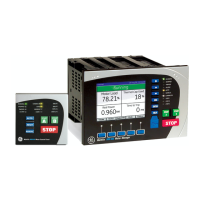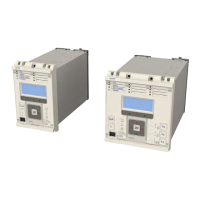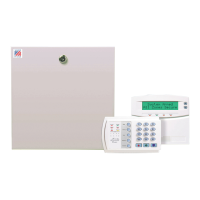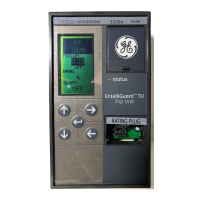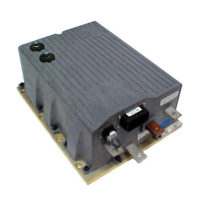22 MM200 MOTOR MANAGEMENT SYSTEM – QUICK START GUIDE
THERMAL PROTECTION CHAPTER 4: PROTECTION ELEMENTS
reflects that overload heating largely swamps the cooling, and this heating is primarily due
to resistive losses in the stator and the rotor windings (said losses being proportional to the
square of the current).
Eq. 1
Eq. 2
In the above equation,
• The trip time represents the time (in seconds) for the MM200 to trip, given the motor
starts cold and the current is constant.
• The multiplier represents the value of the
Curve Multiplier setpoint. This setpoint can
be used to adjust the curve to match the thermal characteristics of the motor.
• Iav represents the equivalent motor heating current in per-unit values on a full load
current base. The value of I
AV
is limited in this equation to 8.0 to prevent the overload
from acting as an instantaneous element and responding to short circuits.
For example, a motor with a stall current (also known as locked rotor current) of 8 times its
FLA, with a curve multiplier of 7, if stalled from a cold state, trips in the following amount of
time.
Eq. 3
This would respect a safe stall cold time of 10 seconds.
The standard overload curves are displayed below.
´
=
Curve Multiplier
timeTrip
2.2116623
0.02530337 x (Pickup - 1) + 0.05054758 x (Pickup -1)
2
´
=
Curve Multiplier
timeTrip
2.2116623
0.02530337 x (Pickup - 1) + 0.05054758 x (Pickup -1)
2
´
=
7
2.2116623
0.02530337 x (8 - 1) + 0.05054758 x (8 -1)
2
=
9.714 seconds
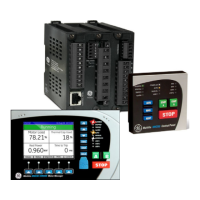
